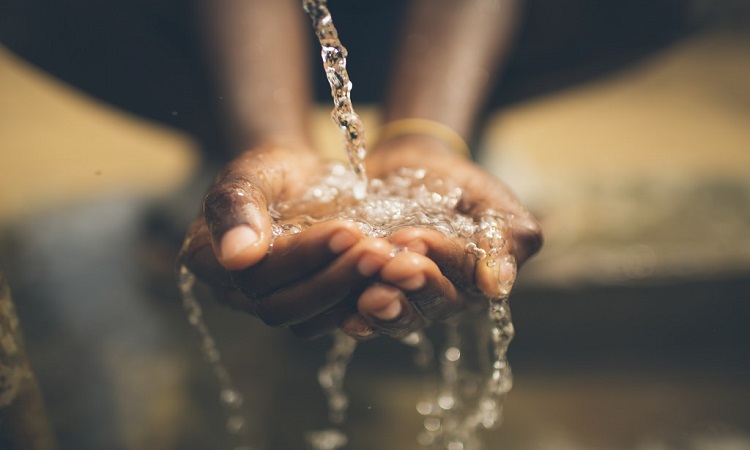Water and the SDGs – the crucial common denominator
When a human baby is born, 75 per cent of its body mass is water. We are made of water and, like all living creatures on our planet, we would wither and die without it.

When a human baby is born, 75 per cent of its body mass is water. We are made of water and, like all living creatures on our planet, we would wither and die without it.
Today, more than 2 billion people lack access to safely managed water services. Around 4.5 billion children, women and men live without safely managed sanitation services. As a result, it is estimated that more than 340,000 children die every year.
The world’s ecosystems, economies, energy and human settlements – all are at risk if we fail to achieve SDG 6: water and sanitation for all by 2030.
Here are three ways that progress on SDG 6 will drive progress in energy (SDG 7), cities (SDG 11), sustainable consumption and production (SDG 12), and protecting life on land (SDG 15).
1. Water and sanitation make cities safer and nicer places to live
The global urban population is set to grow from around 4 billion today to over 7 billion by 2050 (UNESCO 2012).
The ancient city of Rome was able to sustain a population of around 1 million people in 1 AD largely because its citizens had access to water that was kept separate from a large-scale sewer system. But as we know all too well, when people live without safe, affordable, reliable water supply and sanitation, the consequences are devastating.
If towns and cities of the future are to be inclusive, safe, and sustainable, their inhabitants need safe drinking water and sanitation. This is not only a social good; investing in safe water also offers economic opportunities. For example, the introduction of innovative and affordable water technologies can create employment in new services and industries.
2. Clever use of water and waste will help energy and economies
Today, an ever-increasing and more affluent global population is demanding an ever-increasing amount of stuff. Manufacturing requires water, from around 2,500 litres to make a cotton t-shirt to around 12,000 for a smart phone. And because of the way we produce energy, roughly 75% of all industrial water withdrawals are used for energy production (UNESCO, 2014). There will need to be much more support for the development of less water-intensive renewable energy, such as hydropower and wind.
Agriculture is a major consumer of water. The safe reuse of wastewater – for agricultural irrigation, municipal purposes, industrial washing and cooling etc – can help us create more circular, sustainable production and consumption patterns. Also, improved sanitation systems and treatment plants can generate fertilizer from human and animal waste that could be used in farming or turned into biofuels.
3. Using nature-based solutions helps humans and the environment
Water’s journey begins and ends in nature. So, any threat to the source of all our water is a mortal threat to human health.
Globally, over 890 million people practise open defecation, and more than 80% of wastewater flows back into the environment without being treated or reused.
In addition there is the growing issue of the degradation of our natural environment. At a time when climate change is resulting in more extreme weather events and disasters, we cannot afford to further degrade our environment. As things stand, the number of people at risk from floods is projected to rise from 1.2 billion today to around 1.6 billion in 2050.
One way to protect life and water supply is to harness nature itself – restoring forests, grasslands and natural wetlands, reconnecting rivers to floodplains, creating buffers of vegetation along water courses.
These nature-based solutions are not a panacea but, alongside human-made water and sanitation infrastructure, they can help us live in harmony with the ecosystems that literally keep us alive.
As we look ahead to 2030, the much-talked-about 4th industrial revolution offers opportunities never seen before in our sector, such as blockchain-based technologies that can improve water use in agriculture; the ‘Internet of Things’ that will enable more connections and a greater exchange data; and satellite images that can help us track the quality of our ecosystems and implement strategies to reduce the risk of disaster.
New technologies will be essential in creating positive and sustainable relationships between seemingly disparate areas – such as economies, energy, human settlements and ecosystems – to allow for a more sustainable future.
Underlying the apparent intricacies of the 2030 Agenda is one simple truth, underscored by SDG 6, that every person on our planet will always need water and sanitation to survive and thrive.
- FIRST PUBLISHED IN:
- World Bank
ALSO READ
Atishi directs chief secretary to urgently review Delhi's water supply issues
Gulf Arab states test waters with Iraq investment
Yamaha introduces environmentally protective watercraft
NASA rover's latest rock sample offers new clues about Mars' watery past
20 monkeys found dead in water tank in Telangana










